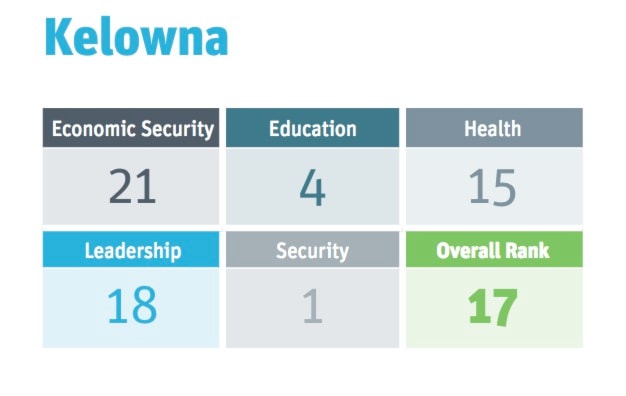Kelowna became a worse place to be a woman in the last year.
In a report authored by Kate McInturff, a senior researcher at the Canadian Centre for Policy Alternatives, Kelowna placed 17 of 25 urban centres for gender equality in 2016. That's a drop from 13th the year before.
That slide, McInturff explained, can be chalked up to Kelowna staying stagnant in categories like economic security, personal security, health, leadership and education while other cities made improvements.
And there are places where Kelowna has some notable shortcomings, such as the workforce.
Around 65 per cent of men and 56 per cent of women are holding jobs and it gets worse when full-time employment is analyzed.
"Women’s full-time employment levels in Kelowna are among the lowest of the 25 cities, with only 38 per cent of women in Kelowna holding full-time jobs, said McInturff.
"It's true across the country that women are twice are likely to work part time, but it was a significant gap in Kelowna."
That can have a detrimental effect down for the whole economy, McInturff warns
"If I were in Kelowna and thinking about economic development I'd be asking why so many women had so little access for full-time work," she said. "Having better levels of employment for women is useful when you have sectors rising and falling."
For example, when traditionally male-filled industries like oil and gas or forestry take a nosedive, the communities that fare better have robust employment opportunities for all.
"If a woman in the household has a job and it's secure, it can make the economy more elastic," she said.
Women also make less in Kelowna than elsewhere.
"Wages are below average in Kelowna and the gap between men’s and women’s earnings is larger than the national average, with women earning 66 per cent of what men earn," reads the report.
Kelowna’s poverty rates are close to the national average, but the gap between men and women is slightly larger than average, with 11.7 per cent and 14.1 per cent respectively living below the Low Income Measure.
When it comes to education, Kelowna women are more likely to have completed a high school diploma than men, but less likely than their female counterparts across the country to have attained a university degree.
"The share of women and men who hold university degrees is well below the national average, while the share of women and men who hold college degrees is above average."
Around 24 per cent of women have competed a college degree compared to 17 per cent of men.
Men are twice as likely to have completed trades training and apprenticeships, with 18 per cent of men and nine per cent of women having done so.
Life expectancy in Kelowna is just above the Canadian average and, as is typically the case, women live to around 84, while men get to around 79.
The quality of those years differs, however. Men are more likely than women to rate their health as very good or excellent and women are slightly more likely than men to report high levels of stress in their lives.
The research took into account 25 cities across Canada that represent 67 per cent of the country’s population.
1. Victoria
2. Kingston, Ont.
3. London, Ont.
4. Quebec City
5. Gatineau,Que.
6. Montreal
7. Sherbrooke, Que.
8. St. John’s, N.L.
9. Vancouver
10. Halifax
11. Toronto
12. Kitchener-Cambridge-Waterloo
13. Hamilton, Ont.
14. Ottawa
15. Abbotsford-Mission, B.C.
16. Barrie, Ont.
17. Kelowna
18. Regina
19. St. Catharines-Niagara
20. Winnipeg
21. Saskatoon
22. Edmonton
23. Calgary
24. Oshawa
25. Windsor
